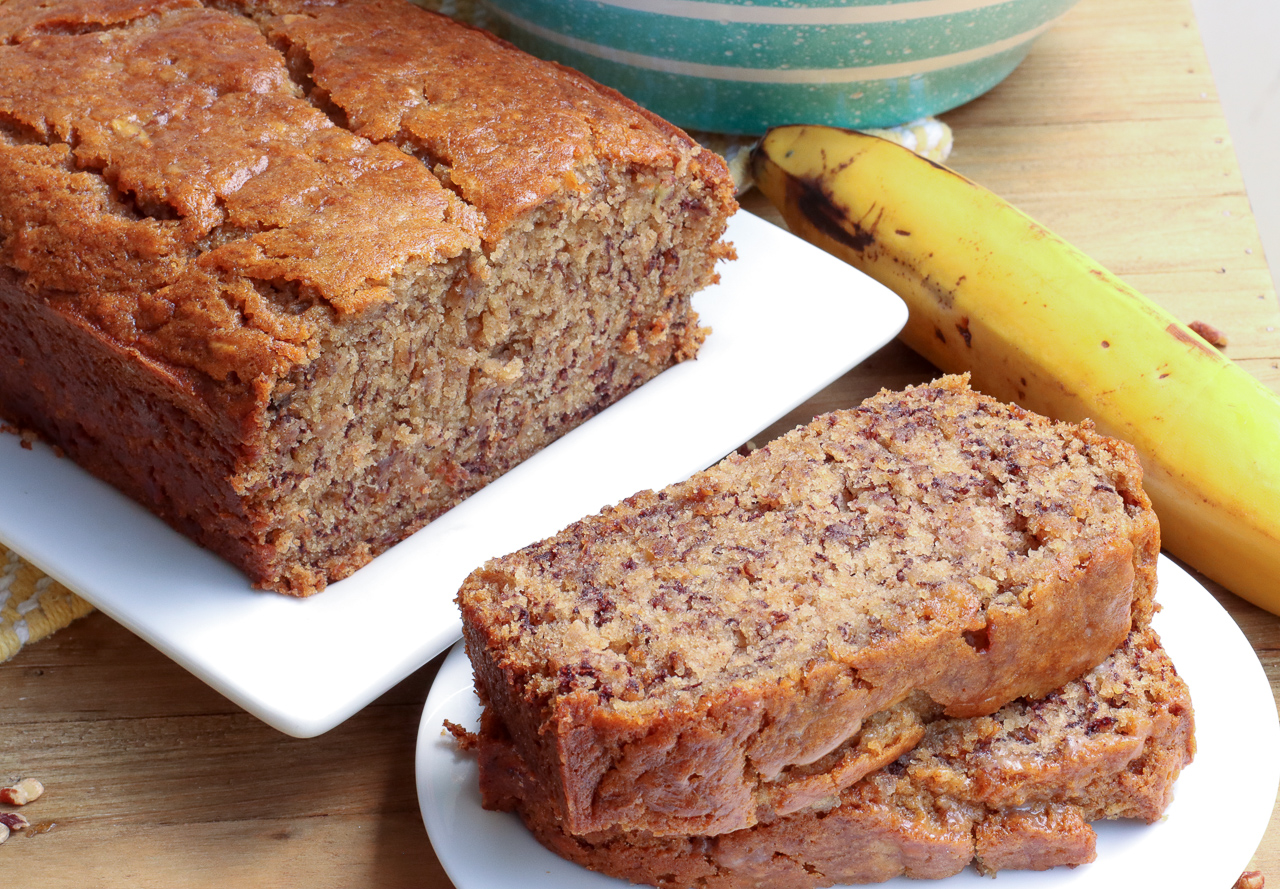Our articles are dedicated to helping you find the right product at the right price. We may receive revenue from affiliate and advertising partnerships for sharing this content and when you make a purchase. Learn moreMore from Nutrition Tips
Were all baking – and eating – up a banana bread storm in self-isolation, but a dietitian reveals why its not as healthy as we all think. Plus, she shares her five favourite healthier alternatives.
Have you reached the banana bread stage of #iso yet? I have. Why wouldn’t you want to jump in the kitchen and whip up a batch of (arguably) the best snack on the planet to make your iso days better?
With good health in mind, however, I’d advise you to tread cautiously when it comes to this old favourite. Here’s why.
You may find banana bread delicious, but conventional banana breads tend to be high in added sugar, refined carbs, and calories. Thus, it’s best to enjoy banana bread occasionally as part of a balanced, nutrient-dense diet.

How healthy is banana bread?
With a base of bananas, you’d be forgiven for thinking banana bread is a sure-fire healthy bite to eat. And while in some cases that is true, in others, banana bread can come packed with calories, added sugar and saturated fat – it all comes down to what you put in it.
Let’s start with the obvious: bananas. Sure, bananas contain some sugar, but it is natural and comes in a wholefood package of vitamins, minerals and gut-loving fibre. You’ll want to use as many bananas as you can for sweetness, so you can keep the added sugar to a minimum (FYI, that’s the ‘unhealthy’ type). In case you’re wondering, ‘added sugar’ includes plain sugar like caster or brown sugar, but also honey, maple syrup and rice malt syrup (*gasp*).
Then, there’s the flour.
Typical café-style and store-bought banana breads contain white flour, which isn’t ideal. That’s because white flour is made from refined wheat and has a high glycaemic index, meaning it’ll spike your blood sugar level and leave you feeling hungry again soon after. For a healthier loaf, opt for wholemeal flour – it contains far more hunger-busting fibre and energising b-group vitamins. If you’re on a gluten-free diet or just after something a little different, almond meal or buckwheat flour are nutritious alternatives as well.
Last but not least, you can’t forget the added extras. For obvious reasons, a heap of choc chips in your banana bread isn’t ideal – but a swirl of natural peanut butter, a handful of chopped walnuts or a sprinkle of chia seeds will add brain-boosting fats. If you’re after extra sweetness, you could also add other fruits like raspberries or blueberries.
Oh, and skip the butter when you’re serving it, too – it’s packed with unhealthy fats, and adds a tonne of extra calories.
Banana Bread Problems, Troubleshooting And Tips
FAQ
Why is banana bread unhealthy?
Why is banana bread so addictive?
What are the benefits of banana bread in the body?
Why do you need bad bananas for banana bread?
Is banana bread unhealthy?
Sadly, most types of banana bread that people bake are rather unhealthy. A typical banana bread recipe includes ingredients that make each slice high in calories. Banana bread contains lots of calories, carbohydrates, and sugar. These are all things that you need to consume in moderation.
Do bananas have any side effects?
Bananas are likely safe to consume in normal amounts. Side effects to banana are rare but may include bloating, gas, cramping, softer stools, nausea, and vomiting. In very high doses, bananas might cause high blood levels of potassium.
What happens if you eat too much banana bread?
Using too much banana could make your bread heavy and damp in the center, causing it to appear undercooked and unappealing. If you have bananas leftover, you can always freeze them for later use. 4. You Measure Flour the Wrong Way Moisture is key when it comes to banana bread, and the ratio of flour to banana makes all the difference.
Is bread bad for You?
Bread is a staple food in many countries and has been eaten worldwide for millennia. Typically prepared from a dough made of flour and water, bread is available in many varieties, including sourdough, sweet bread, soda bread and more. Despite its widespread popularity, bread is often characterized as unhealthy, harmful and fattening.
